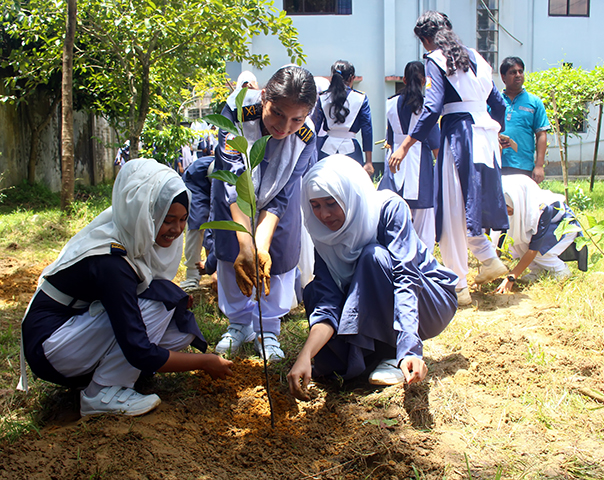Combining Mangrove Conservation with Sports for Youth in the Dominican Republic

Abstract
Mangroves play an important role in protecting the environment and communities from natural disasters and climate change. As the effects of climate change worsen, the conservation of ecosystems that are natural climate solutions becomes paramount to alleviate further risks. Research suggests that education programs linked with sports may help stimulate community awareness and engagement in conservation activities. In the Dominican Republic, researchers are measuring whether a youth conservation awareness program combined with sports encourages efforts toward the conservation of coastal mangroves.
Policy Issue
Mangroves are often the first line of defense in protecting coastal ecosystems and communities from floods and storm surges. They also can help reduce the effects of climate change by storing carbon in their roots, branches, and surrounding soil. However, despite their role in protecting the environment, mangrove coverage has decreased by 1.04 million hectares globally since 1990 due to deforestation.1 As natural shocks become more frequent and intense due to climate change, the deforestation of mangroves can have a significant negative impact on coastal communities.
Because youth sports are an activity that can bring together communities, conservation programs around the world often include sports components to raise local awareness and cooperation towards conservation goals.2 However, few of these programs have been rigorously evaluated. This study contributes to the literature by rigorously evaluating an initiative for youth in the Dominican Republic that combines mangrove conservation education with providing equipment for sports leagues.
Context of the Evaluation
An estimated 70 percent of the population in the Dominican Republic is at high risk for floods and severe storms.3 Although mangroves can reduce these threats significantly and are habitats for much of the country’s coastal wildlife, mangrove coverage has dropped by one-third over the past fifty years. Seacology–an international island ecosystem conservation organization–started the “Dominican Republic Mangrove Initiative” to increase awareness of mangroves and their role in the ecosystem and stimulate conservation efforts.4
As part of this Mangrove Initiative, in 2021, Seacology partnered with Grupo Jaragua–a local conservation organization–to implement the “Play for the Mangroves” project. “Play for the Mangroves” combines conservation awareness with sports by having kids learn about mangrove conservation and participate in conservation activities while providing them with equipment for their sports leagues.
Details of the Intervention
Researchers are partnering with Seacology and Grupo Jaragua to measure whether the “Play for the Mangroves” conservation awareness and sports program encourages efforts towards the conservation of coastal mangroves.
As part of the intervention, youth will attend information sessions about the importance of mangroves, threats to mangroves, and what can be done to protect them. They will also participate in conservation activities such as reforestation and coastal or mangrove cleaning. To incentivize participation in these conservation education sessions, researchers are providing sports equipment to the youth’s sports leagues.
The intervention takes place throughout the Dominican Republic in communities near coastal mangroves and includes 1,500 youth aged 9-20 participating with their local sports clubs. The sports clubs have been divided randomly into the following groups:
- Mangrove Conservation and Training: Sports clubs will attend information sessions about coastal mangrove conservation and participate in one conservation activity. They will receive sports equipment for their participation.
- Comparison Group: Sports clubs will attend information sessions about art history instead of mangrove conservation. They will not participate in conservation activities but will still receive sports equipment.
To measure changes in perceptions of mangroves, understanding of their role in coastal protection, and willingness to conserve them, as well as outcomes related to involvement in sports leagues (e.g., empowerment, teamwork, and leadership) in the community, researchers have conducted surveys with 800 children and 720 adults.
Results and Policy Lessons
Research ongoing; results forthcoming.
Sources
1. Global Mangrove Alliance, “FAO reviews 30 years of global forest data,” Global Mangrove Alliance, date accessed 31 October 2022, https://www.mangrovealliance.org/news/30-years-of-global-forest-data/
2. Scales, Peter C., and Amy K. Syvertsen. "How the Performing Arts, Sports, and Nature Conservation Foster Positive Youth Development." (2022).
Seacology Staff, “Youth sports programs drive conservation across Latin America,” Seacology, 26 January 2022, https://www.seacology.org/2022/01/mangroves-youth-sports-conservation/
3,4. Seacology Staff, “Dominican Republic Mangrove Initiative,” Seacology, date accessed 31 October 2022, https://www.seacology.org/project/dominican-republic-mangrove-initiative/
Partners













